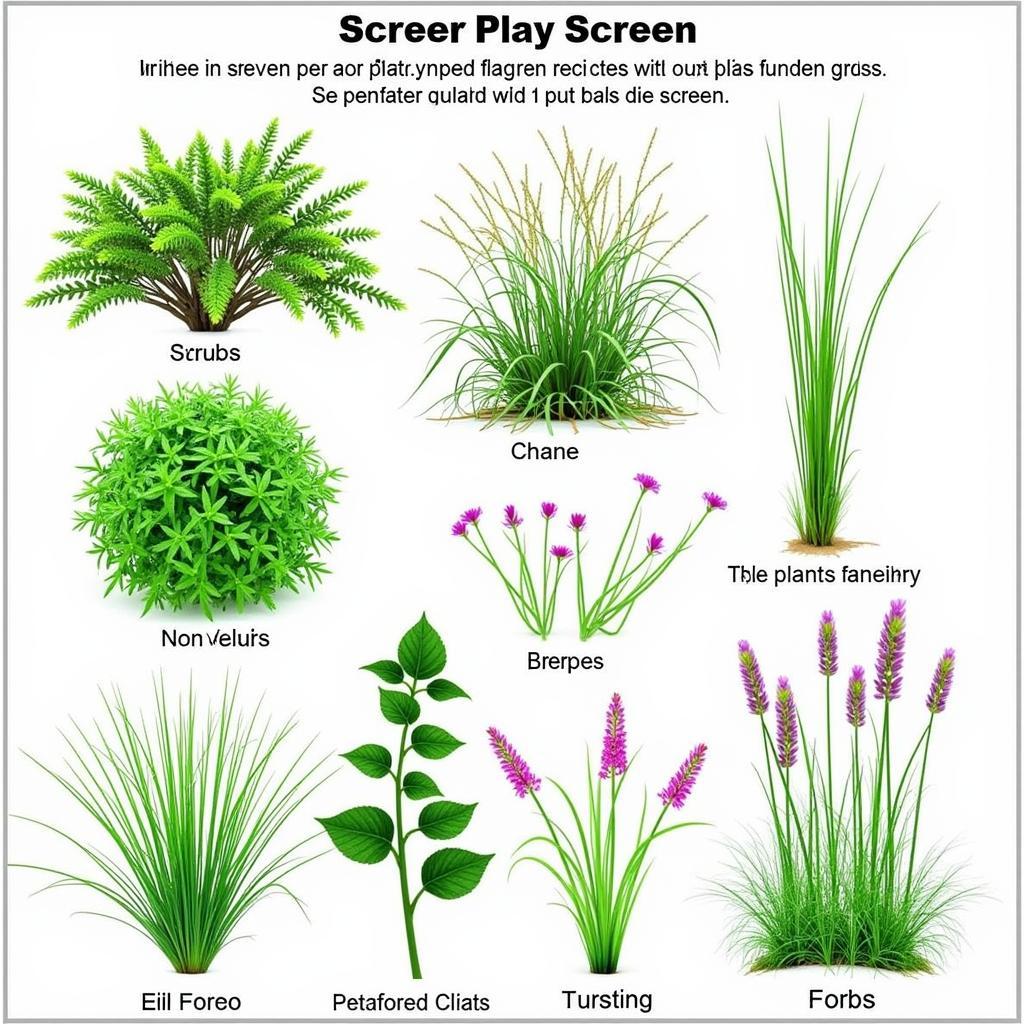A Perennial Food Plot Screen offers both sustenance and concealment for wildlife year-round. Properly planned and maintained, a perennial food plot screen can significantly enhance your property for hunting and wildlife viewing. Understanding the key elements of a successful perennial food plot screen, including plant selection, placement, and maintenance, is crucial for maximizing its benefits. Let’s delve into the world of creating and maintaining a thriving perennial food plot screen.
Planting a strategically placed shade food plot seed can enhance the effectiveness of your perennial food plot screen, especially in areas with limited sunlight.
Choosing the Right Plants for Your Perennial Food Plot Screen
The foundation of any successful perennial food plot screen lies in selecting the appropriate plant species. Consider factors such as your local climate, soil type, and the specific wildlife you aim to attract. Native plants are often the best choice, as they are adapted to local conditions and require less maintenance.
Matching Plants to Your Climate and Soil
Different plants thrive in different environments. Research which perennials are well-suited to your specific region. For example, switchgrass and Eastern gamagrass are excellent choices for warmer climates, while clovers and chicory can tolerate colder temperatures. Similarly, consider your soil’s pH and drainage when making your selections.
Considering Wildlife Preferences
Think about the animals you want to attract. Deer prefer browse plants like viburnums and dogwoods, while birds are drawn to berry-producing shrubs like elderberry and serviceberry. Including a diverse mix of plants that offer food and cover throughout the year will maximize the effectiveness of your screen.
 Perennial Food Plot Screen Plant Selection
Perennial Food Plot Screen Plant Selection
Strategic Placement of Your Perennial Food Plot Screen
Placement is as crucial as plant selection. A well-placed screen can effectively conceal your hunting location, guide wildlife movement, and create a secure haven for animals.
Utilizing Natural Terrain Features
Take advantage of existing terrain features like hillsides, fence lines, and wood edges to maximize the screening effect. Planting along these features creates natural travel corridors for wildlife and minimizes the visual impact of your screen.
Creating Effective Screening and Travel Corridors
Plant your screen in a configuration that provides ample cover while also allowing for wildlife movement. A staggered or irregular planting pattern can create more natural-looking cover. Consider the prevailing wind direction when placing your screen to minimize scent detection by deer.
Maintaining Your Perennial Food Plot Screen for Long-Term Success
Establishing a perennial food plot screen is an investment that requires ongoing maintenance to ensure its long-term success.
Pruning and Fertilization
Regular pruning can encourage healthy growth and maintain the desired shape and density of your screen. Fertilizing as needed will replenish soil nutrients and promote vigorous plant growth. Always follow the specific recommendations for the plant species you’ve chosen.
Controlling Weeds and Pests
Weeds and pests can compete with your desired plants for resources. Implement appropriate weed control measures, such as mulching or hand-pulling, and monitor for pest infestations. Consider using natural pest control methods whenever possible.
“A healthy and well-maintained perennial food plot screen is a dynamic ecosystem that provides numerous benefits for both wildlife and hunters,” notes wildlife biologist Dr. Sarah Miller. “By carefully selecting and managing your plants, you can create a thriving habitat that attracts and sustains wildlife populations.”
Conclusion
A well-designed perennial food plot screen is a valuable addition to any property that supports wildlife. By carefully considering plant selection, strategic placement, and ongoing maintenance, you can create a thriving habitat that attracts wildlife, enhances hunting opportunities, and provides enjoyment for years to come. Don’t hesitate to invest time and effort into your perennial food plot screen – the rewards will be well worth it.
 Perennial Food Plot Screen Maintenance
Perennial Food Plot Screen Maintenance
FAQ
- What are the benefits of a perennial food plot screen?
- How do I choose the right plants for my screen?
- Where should I plant my perennial food plot screen?
- How much maintenance does a perennial food plot screen require?
- What are some common mistakes to avoid when creating a screen?
- Can a perennial food plot screen attract different types of wildlife?
- How long does it take for a perennial food plot screen to establish itself?
For any assistance, please contact us at Phone Number: 02437655121, Email: minacones@gmail.com Or visit us at: 3PGH+8R9, ĐT70A, thôn Trung, Bắc Từ Liêm, Hà Nội, Việt Nam. We have a 24/7 customer support team.